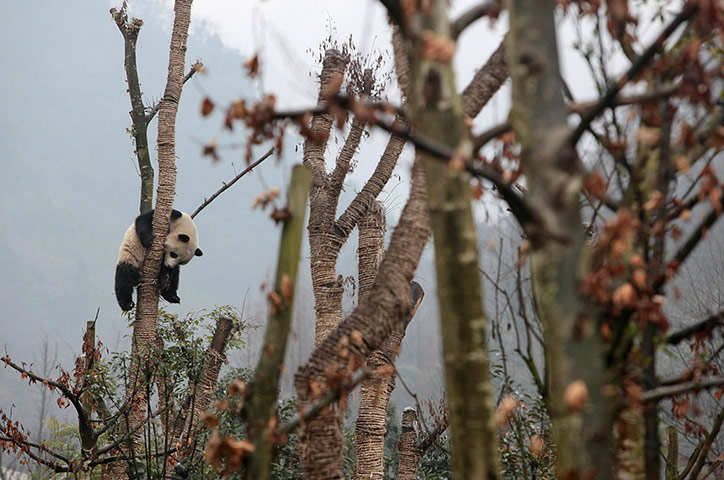 A reminder that the WDIN website has a new web address, www.wdin.org. Don’t forget to update your bookmarks!
A reminder that the WDIN website has a new web address, www.wdin.org. Don’t forget to update your bookmarks!
We did our best during the move to update all our links, but if you find a broken one please email us at digest@wdin.org and include the url of the broken link. Your help with this matter is much appreciated by the WDIN team and your fellow Digest readers!
TOP STORIES
Wildlife chiefs concerned over squirrel pox virus
A SECOND red squirrel has been struck down by a deadly disease, similar to myxomatosis, in what is the first outbreak in this country.
Wildlife chiefs have raised concerns after the red squirrel with the squirrel pox virus was discovered on the lower slopes of the Sugar Loaf, near Kilmacanogue, Co Wicklow.
... The first death was discovered just before Christmas in the Hollywood area of Wicklow. The latest victim was found last Friday.
... "This is the first time we have seen this disease in the Republic," he said.
Independent.ie - www.independent.ie
13 Jan 2012
Location: Kilmacanoge, Ireland - Map It
13 Jan 2012
Location: Kilmacanoge, Ireland - Map It

Disease-Carrying Virile American Crayfish Invade U.K. Rivers
 U.S. crayfish and their British cousins do not get along. First the U.K. was invaded by the American signal crayfish (Pacifastacus leniusculus) carrying the deadly crayfish plague, which has killed 95 percent of Britain’s native white-clawed crayfish (Austropotamobius pallipes) over the past 20 years. Now another invasive crayfish species—the virile crayfish (Orconectes virilis), native to the U.S. and Canada—is starting to spread in the rivers around East London. The species also carries crayfish plague.
U.S. crayfish and their British cousins do not get along. First the U.K. was invaded by the American signal crayfish (Pacifastacus leniusculus) carrying the deadly crayfish plague, which has killed 95 percent of Britain’s native white-clawed crayfish (Austropotamobius pallipes) over the past 20 years. Now another invasive crayfish species—the virile crayfish (Orconectes virilis), native to the U.S. and Canada—is starting to spread in the rivers around East London. The species also carries crayfish plague.... Hoping to find out how quickly the virile crayfish will spread to other areas, the U.K.’s Environment Agency (EA) attached tiny radio transmitters to several virile crayfish in the river. The news wasn’t good: According to preliminary results, the crayfish are moving 500 meters per month, far faster than the rate of the signal crayfish invasion in the 1980s. Those first American invaders can now be found throughout England, Wales and Scotland.
Scientific American - blogs.scientificamerican.com
11 Jan 2012
JR Platt
Image courtesy of Scientific American
Location: United Kingdom
11 Jan 2012
JR Platt
Image courtesy of Scientific American
Location: United Kingdom
 Oiled wildlife death toll is ‘tip of the iceberg’
Oiled wildlife death toll is ‘tip of the iceberg’The number of oiled wildlife reported dead is a tiny fraction of the true figure killed by the Rena oil spill, WWF-New Zealand said today.
... Maritime New Zealand reported yesterday that 45 dead oiled birds have been collected by wildlife recovery teams since the beginning of the week when the stern section of the storm-battered Rena began to sink, releasing more oil and littering the ocean with debris and containers. The current total number of dead wildlife recorded stands at 2066.
WWF - wwf.panda.org [Press release]
13 Jan 2012
Location: New Zealand
13 Jan 2012
Location: New Zealand
More News on Oil Spill
>>> New threat to wildlife, fresh oil reaches Papamoa [Location: Matakana Island, News Zealand - Map It 

Red tide lingers off coast of SWFL
Red tide is still lingering off the shores of Lee and Collier counties. The latest red tide report shows very low to medium concentrations in Pine Island Sound, San Carlos Bay and inshore Marco Island.
It's the first week there has been a significant drop in red tide cell concentrations in two months.
Despite the low to medium concentrations, animals are being rushed into rehabilitation clinics at an alarming rate.
...Last month, the clinic was rescuing 7-10 birds a day. Now, that number has dropped to 3-4.
Most birds recover and will be released, but sea turtles aren't as lucky.... Ten turtles have washed up on Lee County's shores. Only one survived.
OTHER WILDLIFE HEALTH RELATED NEWS
Photo courtesy of The Guardian's feature The Week in Wildlife
 Wildlife Center treating poisoned bald eagle [Suspect lead poisoning][Prince William Cty, Virginia, USA - Map It
Wildlife Center treating poisoned bald eagle [Suspect lead poisoning][Prince William Cty, Virginia, USA - Map It  ]
]
- Chief vet fears pigeon virus could mutate [Paramyxovirus][Australia]
- Holes emerge in Harbour report [Unknown disease killing fish in Australia]
- New veterinary surveillance group set up [Domestic animals] [United Kingdom]
- Clues emerge in Clearfield bird deaths [Clearfield - Map It
 (Starlicide poison) and Clinton - Map It
(Starlicide poison) and Clinton - Map It  (Unknown mortality) , Utah, USA]
(Unknown mortality) , Utah, USA]




